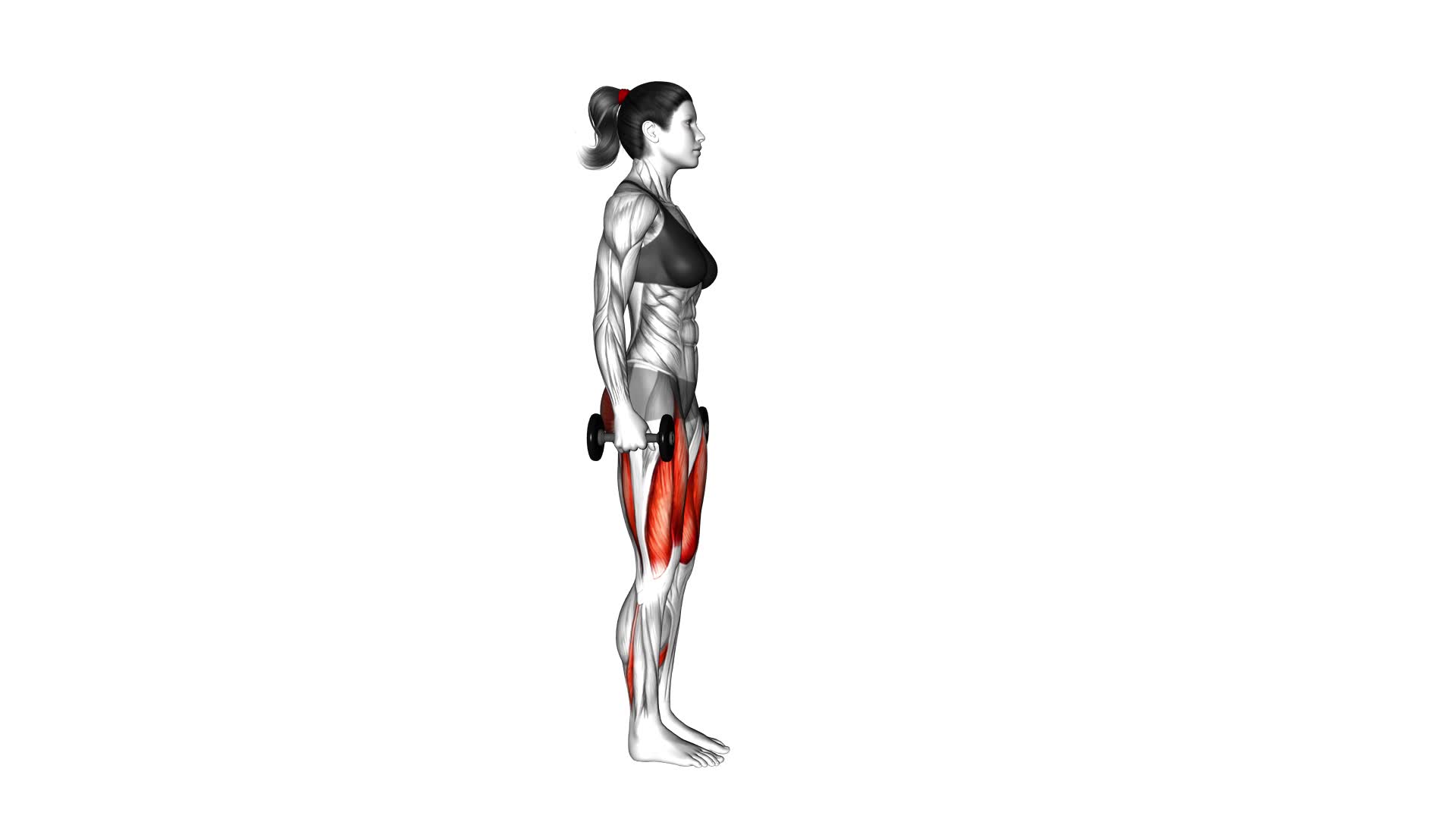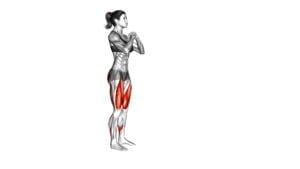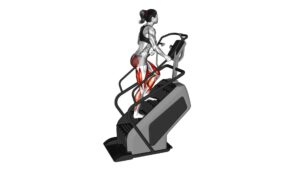Dumbbell Walking Lunge (female) – Video Exercise Guide & Tips

Are you looking for a challenging lower body exercise that will help you tone your legs and glutes? Look no further than the dumbbell walking lunge!
Watch This Exercise Video
In this video exercise guide, we'll show you the proper form and technique, variations and modifications, as well as tips for maximizing your results.
Avoid common mistakes and get ready to feel the burn with this effective workout. Let's get started!
Key Takeaways
- Dumbbell walking lunges are an effective exercise for toning legs and glutes.
- This exercise targets multiple muscle groups including quadriceps, hamstrings, glutes, and calves.
- Proper form and technique, such as maintaining a 90-degree angle with the front knee and avoiding rounding the back, are essential for maximizing results.
- Variations and modifications, such as using different equipment or adding advanced progressions, can be incorporated to target different muscle groups and add extra challenge.
Benefits of Dumbbell Walking Lunges
You should regularly incorporate dumbbell walking lunges into your workout routine to reap their numerous benefits. Not only are they a great exercise for targeting multiple muscle groups, but they also improve balance and stability.
When performing dumbbell walking lunges, you engage various muscles throughout your body. The primary muscles activated include the quadriceps, hamstrings, glutes, and calves. These muscles work together to help you maintain balance and control as you lunge forward and backward. Additionally, the use of dumbbells adds resistance, further challenging your muscles and promoting strength development.
As you progress with dumbbell walking lunges, you'll notice improved balance and stability. This is because the exercise requires you to maintain a stable core and control your body's movement. By constantly challenging your balance, you enhance the coordination between your muscles, joints, and nervous system. Ultimately, this leads to better overall stability and reduces the risk of falls or injuries.
Proper Form and Technique
To ensure proper form and technique while performing dumbbell walking lunges, it's important to consistently focus on maintaining a stable core and controlling your body's movement. By following these guidelines, you can maximize the effectiveness of this exercise and reduce the risk of injury:
- Keep your back straight: One common mistake is rounding the back during lunges, which puts unnecessary strain on the spine. To maintain proper technique, keep your back straight and engage your core muscles to support your spine.
- Step forward with control: As you perform the walking lunge, make sure to step forward in a controlled manner. Avoid rushing through the movement or taking excessively large steps, as this can compromise your balance and form.
- Maintain a 90-degree angle: When stepping forward into the lunge position, aim to create a 90-degree angle with your front knee. This ensures that your knee is properly aligned and reduces the risk of knee pain or injury.
Variations and Modifications
To add variety to your dumbbell walking lunges, consider incorporating different variations and modifications into your workout routine. These variations can help target different muscle groups and add an extra challenge to your exercise.
One option is to use different equipment during your dumbbell walking lunges. Instead of using dumbbells, you can try using kettlebells or a barbell. The different weight distribution and grip options can provide a new stimulus to your muscles and help improve your overall strength and stability.
Another option is to try advanced progression options. Once you have mastered the basic dumbbell walking lunge, you can add more difficulty by incorporating a jump or adding a twist at the end of each lunge. These advanced variations require more coordination and control, but they can help take your workout to the next level and further enhance your lower body strength and power.
Remember to always start with proper form and technique before attempting any variations or modifications. It's important to listen to your body and progress at a pace that's comfortable for you.
Tips for Maximizing Results
To maximize your results, it's important to incorporate these tips into your dumbbell walking lunge routine:
- Focus on nutrition: Proper nutrition is essential for enhancing muscle growth. Ensure that you're consuming a balanced diet that includes an adequate amount of protein, carbohydrates, and healthy fats. Protein is particularly important for muscle repair and growth, so be sure to include lean sources such as chicken, fish, and tofu in your meals. Additionally, consider incorporating supplements like whey protein or branched-chain amino acids (BCAAs) to support muscle recovery and growth.
- Prioritize rest and recovery: While exercise is important, rest and recovery are equally vital for achieving optimal results. Allow your body enough time to recover between workouts, as this is when your muscles repair and grow stronger. Aim for at least 7-8 hours of quality sleep each night to support your body's recovery process. Additionally, consider incorporating active recovery days into your routine, such as yoga or light cardio, to promote blood flow and reduce muscle soreness.
- Listen to your body: Pay attention to any signs of overtraining or fatigue. Pushing yourself too hard without proper rest can lead to injuries and hinder your progress. If you're feeling excessively tired or experiencing pain, take a break and allow your body to recover. Remember, progress is made over time, so be patient and listen to your body's needs.
Common Mistakes to Avoid
To avoid common mistakes and maximize your results with the dumbbell walking lunge exercise, it's important to be mindful of proper form and avoid these errors.
One common mistake isn't maintaining proper technique throughout the movement. When performing a walking lunge, it's crucial to keep your back straight, shoulders back, and core engaged. Avoid leaning forward or rounding your back, as this can put unnecessary strain on your lower back and increase the risk of injury.
Another mistake to avoid is taking steps that are too large. While it may seem like a bigger step will give you a better workout, it can actually decrease the effectiveness of the exercise. Taking smaller, controlled steps allows for better stability and engagement of the muscles. Additionally, make sure to keep your front knee aligned with your ankle and not extend it beyond your toes. This helps to protect your knee joint and ensures proper activation of the muscles.
Lastly, rushing through the exercise is a common mistake that can hinder your progress. Take your time and focus on each step to ensure proper form and engagement of the muscles. Remember to breathe throughout the movement and maintain a steady pace.
Frequently Asked Questions
How Many Calories Does a Dumbbell Walking Lunge Workout Burn?
When you do a dumbbell walking lunge workout, you can burn a significant amount of calories. This exercise not only targets your leg muscles but also engages your core, glutes, and shoulders. The more muscles you activate, the more calories you burn.
While the exact number of calories burned can vary depending on factors like intensity and duration, a dumbbell walking lunge workout is an effective way to torch calories and build strength throughout your body.
Can Dumbbell Walking Lunges Help in Toning and Shaping the Glutes?
Dumbbell walking lunges are a great exercise for toning and shaping your glutes. By adding resistance with dumbbells, you increase the intensity and target those muscles even more.
This exercise not only works your glutes, but also engages your quads, hamstrings, and core, helping to strengthen and tone your entire lower body.
Proper form is key to maximize results, and modifications can be made to accommodate different fitness levels.
Is It Necessary to Use Dumbbells for Walking Lunges, or Can Bodyweight Alone Be Effective?
Using dumbbells in walking lunges offers several benefits. The added weight helps to increase the intensity of the exercise and can contribute to muscle growth and strength development in your glutes and legs.
However, if you don't have access to dumbbells, bodyweight walking lunges can still be effective in toning and shaping your glutes. Bodyweight lunges engage the muscles in a similar way and can still provide a challenging workout.
What Is the Recommended Frequency for Incorporating Dumbbell Walking Lunges Into a Workout Routine?
To maximize the benefits of incorporating dumbbell walking lunges into your workout routine, it's important to consider the recommended frequency.
By regularly adding this exercise to your routine, you can strengthen your lower body, improve balance, and increase overall muscle tone.
The recommended frequency for dumbbell walking lunges varies depending on your fitness level and goals. However, incorporating them 2-3 times per week can be a good starting point for most individuals.
Remember to consult with a fitness professional to tailor your routine to your specific needs.
Are There Any Specific Warm-Up Exercises or Stretches That Should Be Done Before Performing Dumbbell Walking Lunges?
Before performing dumbbell walking lunges, it's important to warm up your muscles and prepare your body for the exercise.
A dynamic warm-up, such as jogging or jumping jacks, can help increase your heart rate and loosen up your joints.
Additionally, incorporating some static stretches, like lunges or hamstring stretches, can help improve flexibility and prevent injuries.
Remember to listen to your body and adjust the intensity of your warm-up based on your fitness level.
Conclusion
In conclusion, incorporating dumbbell walking lunges into your workout routine can provide numerous benefits. This exercise helps improve lower body strength, balance, and flexibility. To maximize the effectiveness of dumbbell walking lunges, it's essential to maintain proper form and technique. By doing so, you can ensure that you are engaging the correct muscles and avoiding unnecessary strain.
Additionally, experimenting with variations and modifications can help target different muscle groups and keep your workouts challenging. You can try adding a twist at the end of each lunge or holding the dumbbells at different positions to increase the difficulty. These variations can help prevent boredom and plateauing in your fitness journey.
It is important to note that avoiding common mistakes is crucial to preventing injury. Some common mistakes include lunging too far forward, allowing your knees to cave in, or using too heavy of a weight. It is always important to listen to your body and make adjustments as necessary to prevent any discomfort or injury.
With consistent practice and dedication, you can achieve great results with dumbbell walking lunges. They are a versatile exercise that can be incorporated into any fitness routine to help you reach your goals. So, give them a try and see the positive impact they can have on your overall fitness and strength.

Author
Years ago, the spark of my life’s passion ignited in my mind the moment I stepped into the local gym for the first time. The inaugural bead of perspiration, the initial endeavor, the very first surge of endorphins, and a sense of pride that washed over me post-workout marked the beginning of my deep-seated interest in strength sports, fitness, and sports nutrition. This very curiosity blossomed rapidly into a profound fascination, propelling me to earn a Master’s degree in Physical Education from the Academy of Physical Education in Krakow, followed by a Sports Manager diploma from the Jagiellonian University. My journey of growth led me to gain more specialized qualifications, such as being a certified personal trainer with a focus on sports dietetics, a lifeguard, and an instructor for wellness and corrective gymnastics. Theoretical knowledge paired seamlessly with practical experience, reinforcing my belief that the transformation of individuals under my guidance was also a reflection of my personal growth. This belief holds true even today. Each day, I strive to push the boundaries and explore new realms. These realms gently elevate me to greater heights. The unique combination of passion for my field and the continuous quest for growth fuels my drive to break new ground.







